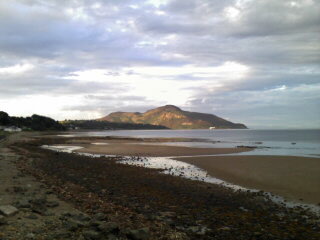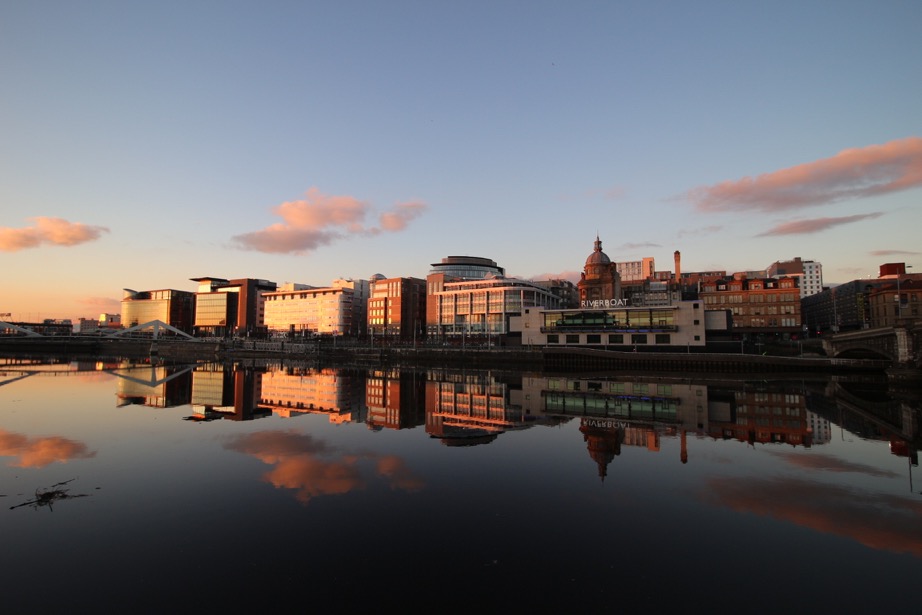
Until last Friday (the 13th as it happened) the wettest cycle I had ever completed was an eight mile ordeal from Jura’s Feolin ferry to Craighouse, the island’s only settlement. I had been promised that the undulating route enjoyed stupendous views and the steep climbs might be rewarded with a sight of some of Jura’s many red deer. In the event, the only view I had was of water cascading down my glasses and the visibility was so bad it was only the smell from the eponymous distillery that alerted me to my eventual arrival at the island’s hotel next door.
But Friday 13th July 2012 easily surpassed the worst that Jura had thrown at me. And this time, I wasn’t cycling in the West of Scotland, Wales, the Lake District or any of Britain’s other notable wet spots. My 20 miles return ride was from Barton under Needwood to Lichfield, in the Midlands: until this jet stream summer, generally regarded as one of the drier areas of the country.
Determined to attend a local Sustran’s Volunteer Rangers’ meeting and equally intent on cycling there, I set out, complete with spare gloves and socks wrapped carefully in my panniers. The outward journey wasn’t too bad: although soaked by deceptively soft rain – “wet drizzle” as my granny used to call it – I was pleasantly surprised by the water repellence of my cheapskate Lidl jacket and after a coffee, tea cake and pleasant hour in the Chapter’s Coffee Shop, set off with renewed vigour, for the return journey.
Now, the wet drizzle had developed into stair rods – another West of Scotland expression used to describe prevailing weather conditions – and by the time I had crossed Trent Valley railway bridge, Netherstowe Lane had acquired enough water to attract some opportunist ducks, who were amusing themselves watching the trains flash by on the adjacent West Coast Main Line.
Around 75 minutes later – the usual journey time doubled by frequent stops to empty my shoes – I stood dripping for a few moments in the garage before removing my sodden layers. The LEDs were illuminating the dark interior and, although the calendar said lunchtime in mid July, in reality it seemed like late afternoon in November.
But, with that peculiar lack of logic that affects cyclists, I felt happy and pleased with life: happy that I had made it without mishap and I could now justify soaking in a hot bath in the early afternoon, before indulging in some well-earned comfort cakes and coffee. And, while I regularly return from a cycle seething about the idiocy of many drivers, today my faith had been restored in human decency, thanks to the two road workers on the A38 who offered me a cup of tea and the British Gas van driver who tailed me patiently along Dogshead Lane to avoid engulfing me with a tsunami of dirty surface water.
And after all, if this wet summer is a portent of our climate-changed summers of the future, then we may as well get used to it.
What I’ve learned about cycling in a deluged summer:
There is no such thing as a truly waterproof jacket and my expensive Gore-Tex jacket performed worse than my cheapy model (see above), despite assiduous proofing
The fewer layers you can wear, the better, particularly on your legs as your skin always dries out quicker
I do need to invest in some overshoes after having to dry out my shoes for the last 72 hours (and trainers are the worst possible option in the wet)
Spending on expensive Ortlieb panniers has paid off as they have easily resisted all this jet-stream summer has thrown at them
Wet gloves are worse than none at all: the only exception being my woolly fingerless ones bought en route in Arran during my Scottish Island Circuit
You do get wetter in a wet summer, than in the winter: just like walkers get wetter from longer grass in the summer, if you’re riding in country lanes and the hedgerows are of rainforest proportions, then your left arm will get much wetter than your right!
Postscipt: my ride through Jura was part of a Scottish Island Circuit that also included Arran and Islay. Although it rained on most days, it was a great way to see these three breathtaking islands, and when the clouds cleared, there were views like this:



